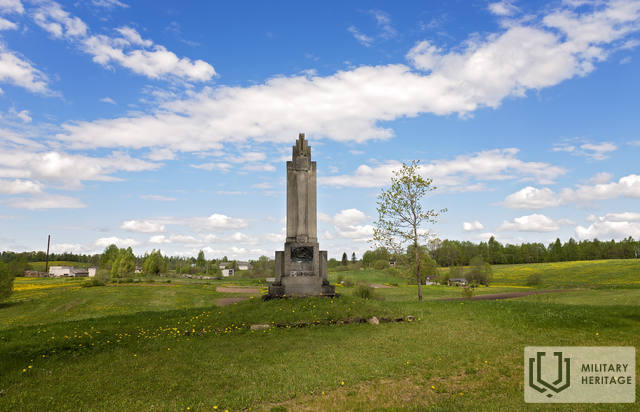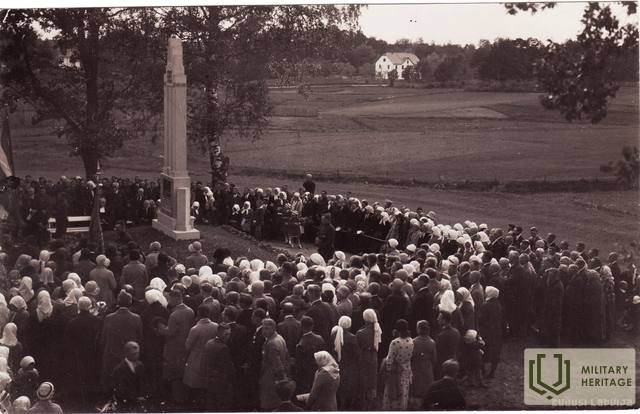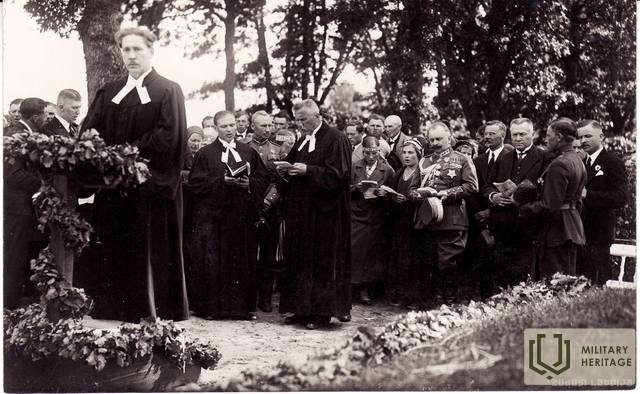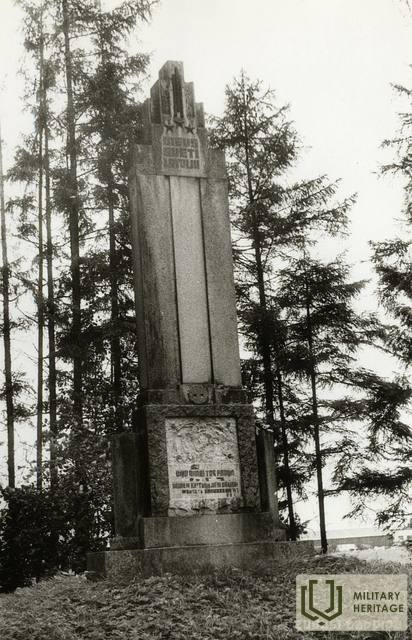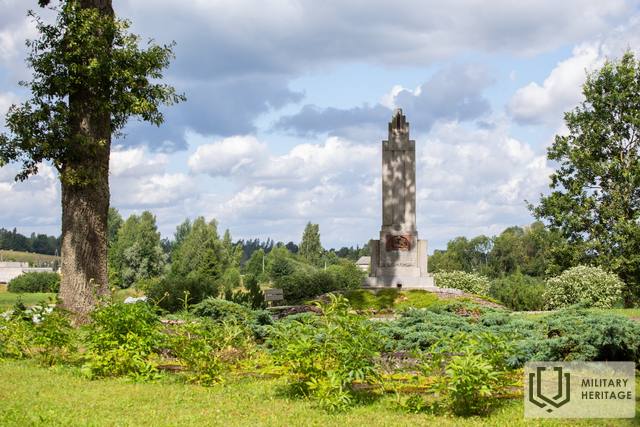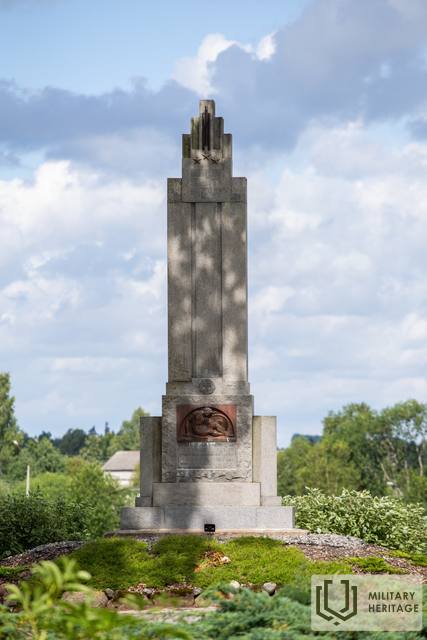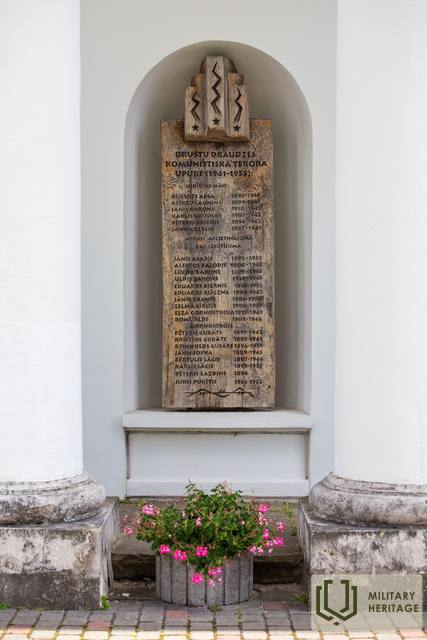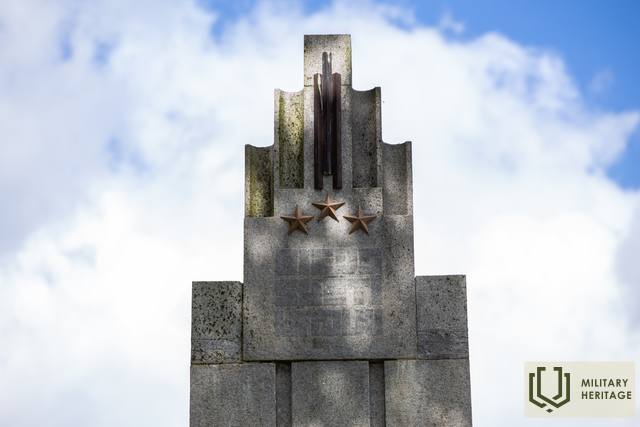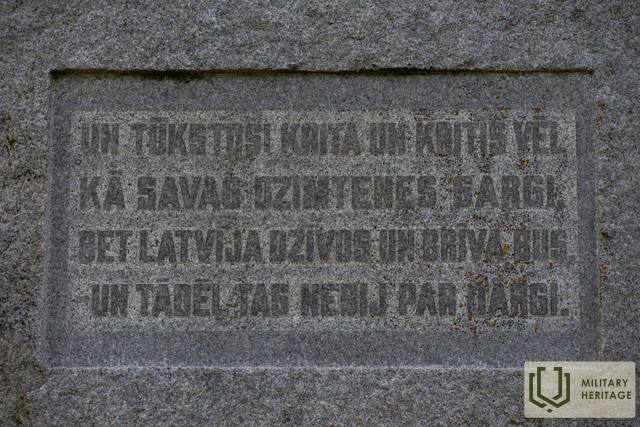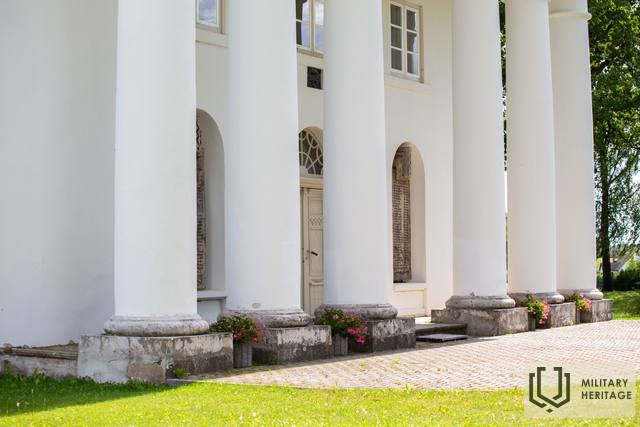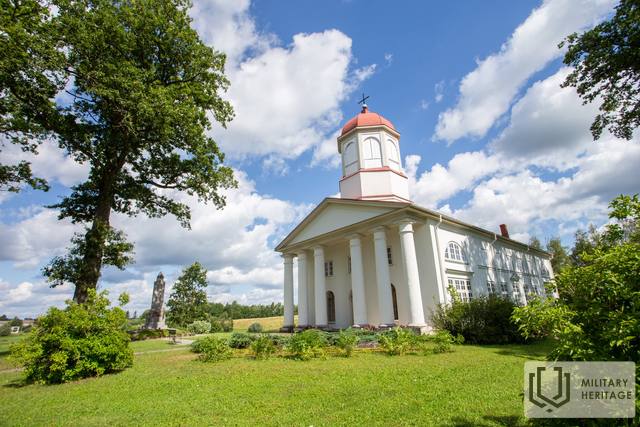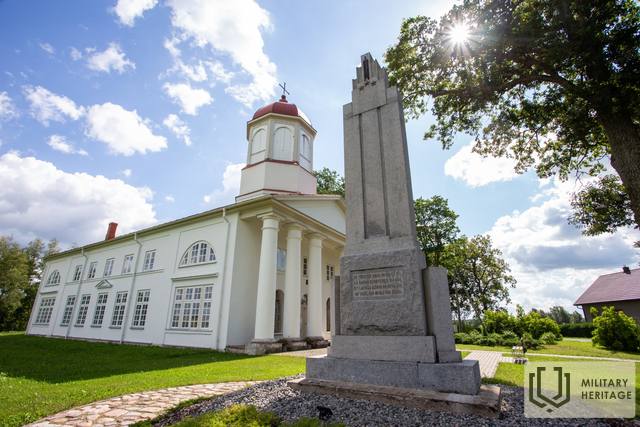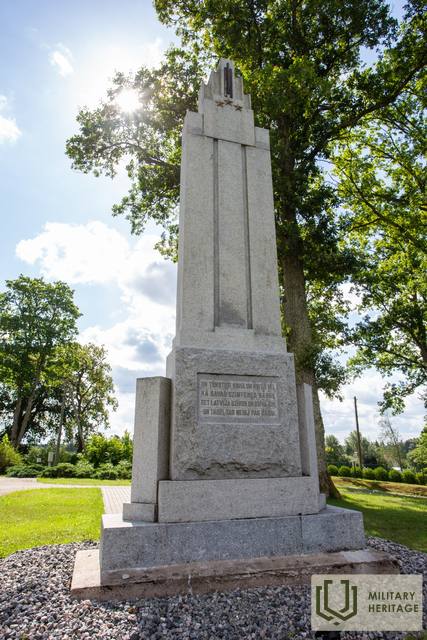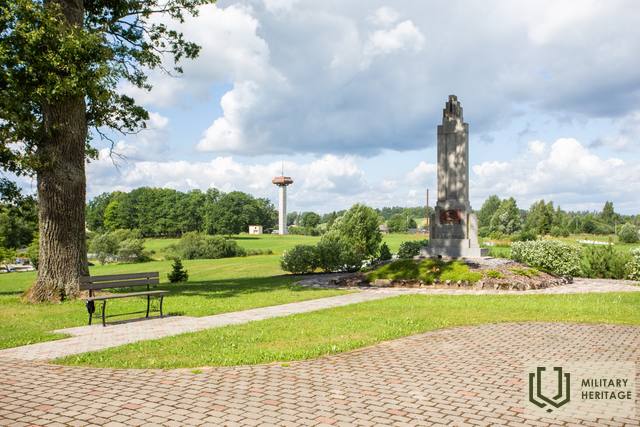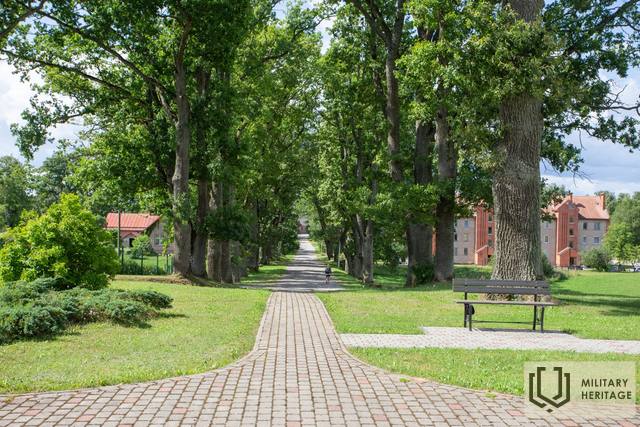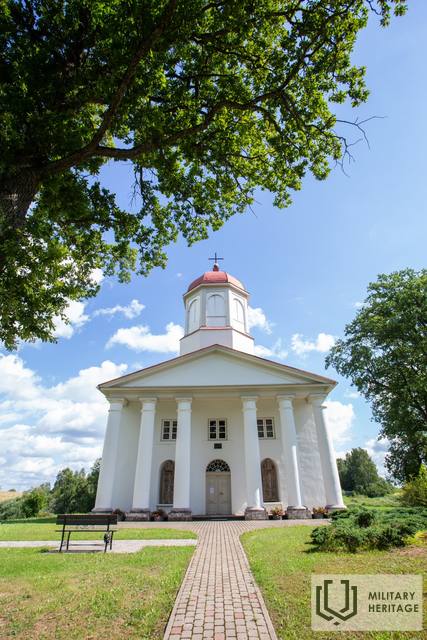Ein Denkmal zur Erinnerung an die Mitglieder der Gemeinde Drustu, die im Ersten Weltkrieg und in den Kämpfen der Befreiung Lettlands gefallen sind
Gedenkstätte

 121
121


It is located near the Drustu Lutheran Church.
The monument was opened on June 19, 1932.
On June 14, 1931, the foundation stone of the monument was laid, on which the text "Hundreds of years will come and go, heroes will sacrifice themselves for fatherhood". A galvanized tin capsule with a memorial letter signed by the then Chief of Army Staff General Aleksanders Kalējs, parents of the fallen soldiers and other honored guests of the ceremony is embedded under it.
During the communist occupation, the text under the tab was cemented, but the bronze tab was hidden by the parishioners. When the Revival began, local activists of the Latvian People's Front cleaned the inscription and placed the preserved tab in its place.
41 members of the Drustu congregation who died in the First World War and the Latvian War of Independence have been identified.
Placed in the niches of the church wall are commemorative plaques for the victims of the communist terror - with 58 names of Drustenians and Gatartians carved into oak - the names of people whose graves are unknown.
Verwendete Quellen und Referenzen:
https://karavirukapi.blogspot.com/2019/07/drustos-piemineklis-1-pk-un-lak.html
https://www.facebook.com/100620134979319/posts/151611853213480/
Zugehörige Zeitleiste
Zugehörige Themen
Zugehörige Geschichten
Beginn, Verlauf und Ende der Schlachten von Cēsis
Der Sieg in den Schlachten von Cēsis sollte ein Wendepunkt im Kampf der Letten und Esten um die Unabhängigkeit ihres Landes werden. Dieser Sieg übertraf die Grenze zwischen der Regierung von Andriev Niedra und den Plänen des deutschen Generals Riediger von der Goltz, das Baltikum zu erobern. Stattdessen nahm die Provisorische Regierung von Kārlis Ulmanis ihre Aktivitäten in Liepāja wieder auf.




